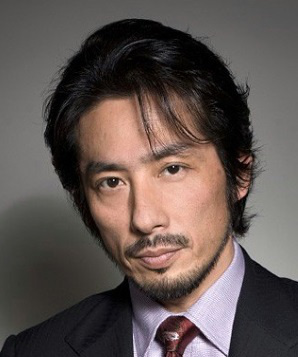JAPANESE GARDENS WITH THE EYES OF A JOURNALIST
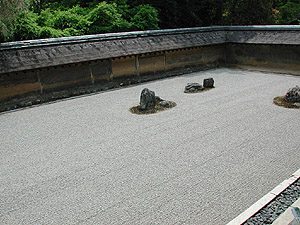 The famous rock garden of the Ryoanji Monastery in Kyoto. Japanese gardens do not bear material fruit. Their purpose in another is to awaken the work of thought.
The famous rock garden of the Ryoanji Monastery in Kyoto. Japanese gardens do not bear material fruit. Their purpose in another is to awaken the work of thought.
Divine emptiness
It is known that in Zen monasteries there are rooms for contemplation. They are empty. According to legend, the founder of the Darum sect, in order to renounce both the world and himself, for many years sat in such a room facing the wall. Contemplation of empty space is one of the methods of understanding the Absolute. Such are the classic Japanese gardens – stones, mosses, water, young pine … They resemble the same rooms and are not created for admiring. The concept of immortal emptiness is hardly Continue reading
ABOUT THE CINEMA SERIES “A MAN IS DIFFICULT”
 In 1996, the movie series Y. Yamada “It’s hard for a man” (“Otoko wa tsuray yo”) got into the Guinness Book of Records as the longest series of films with the same movie star in the title role. The series glorified its author, the actors who starred in it (K. Atsumi, T. Baisho, S. .. Morikawa, H. Dazai, G. Maeda, R. Sato and others), for decades ensured the popularity of the Setiku film studio, the protagonist the series (Torajiro Kuruma) became almost the national hero of Japan, at the scene of the series in the Shibamata district (Katsushika administrative district, Tokyo), where the main events of the film took Continue reading
In 1996, the movie series Y. Yamada “It’s hard for a man” (“Otoko wa tsuray yo”) got into the Guinness Book of Records as the longest series of films with the same movie star in the title role. The series glorified its author, the actors who starred in it (K. Atsumi, T. Baisho, S. .. Morikawa, H. Dazai, G. Maeda, R. Sato and others), for decades ensured the popularity of the Setiku film studio, the protagonist the series (Torajiro Kuruma) became almost the national hero of Japan, at the scene of the series in the Shibamata district (Katsushika administrative district, Tokyo), where the main events of the film took Continue reading
HIROKAZU KORE-EDA: UNSUMPENT MEMORIES
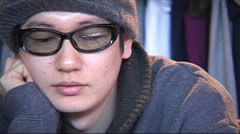 Whatever skeptics say, we cherish our memories. But do we ourselves know about this? Acquired life experience is nothing more than a collection of memories. Both the good ones, pushing for activity in the same direction in which we liked to go once, and the bad ones, taking a step on a curved path.
Whatever skeptics say, we cherish our memories. But do we ourselves know about this? Acquired life experience is nothing more than a collection of memories. Both the good ones, pushing for activity in the same direction in which we liked to go once, and the bad ones, taking a step on a curved path.
But is it possible to choose one, only one memory, with which you would stay forever, and lose everything, forget, erase everything else?
Employees of one celestial office help to answer this question to just dead people, giving them only three days to choose, in the film by Japanese director Hirokazu Kore-eda / After Life / After life /, which premiered on our television not so long ago. After all, it is this very unique memory that will determine the new karma of rebirth … Continue reading
Japanese beauty
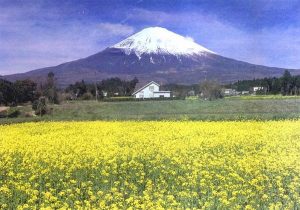 Nothing is easier than seeing Mount Fuji. There is a way to examine it in detail – to come over the weekend, to stay in one of the hotels nearby and, from the veranda of your room, to contemplate the beautiful Fuji at sunrise, in daylight, after sunset. But this is far from all: for fans of conquering Everests, there is a special route along which they climb the mountain “wholesale and retail”, sung in every way. The climb takes from five to seven hours, it’s hard to go, but in general they don’t go to the top, but climb, and at night, in order to rise by dawn or simply crawl (whoever succeeds) to the goal.
Nothing is easier than seeing Mount Fuji. There is a way to examine it in detail – to come over the weekend, to stay in one of the hotels nearby and, from the veranda of your room, to contemplate the beautiful Fuji at sunrise, in daylight, after sunset. But this is far from all: for fans of conquering Everests, there is a special route along which they climb the mountain “wholesale and retail”, sung in every way. The climb takes from five to seven hours, it’s hard to go, but in general they don’t go to the top, but climb, and at night, in order to rise by dawn or simply crawl (whoever succeeds) to the goal.
And here comes the solemn moment – you are at the top of the most beautiful and valuable, from the aesthetic, of course, point of view, the mountains of Japan. Then, without fail, you should take a picture of yourself against the background of a landscape fabulously penetrated by the rays of the rising sun (the Continue reading
Japanese Restaurant Menu
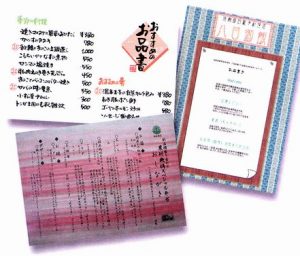 The theater, as you know, begins with a hanger, and restaurants in Japan with osinagaki, the menu. Externally, menus often resemble, without exaggeration, works of art. There are oshinagaki, which are written with a brush on thin rice paper in the style of famous masters of calligraphy. In many restaurants, the texts of the menu are not inferior in artistry to the design. The list of dishes sometimes resembles the classic poetic three-verses. In any case, many images from poetry migrated to Osinagaki. In autumn, for example, you will be offered momiji oroshi. Momiji is a scarlet autumn maple leaves, a traditional poetic image, and osi, literally, is something passed through a grater. The Japanese mood is also caused by a dish with a name such as tsukimi van. A van is a thick vegetable soup with meat or fish in a wooden bowl. And tsukimi is an autumn ritual of admiring the reflection of the moon in water-flooded rice fields. Again in the name of the dish is a hint of the season. Late autumn is associated with boiled shigure-ni dishes. Sigure – translated autumn drizzle, but not cooking. Continue reading
The theater, as you know, begins with a hanger, and restaurants in Japan with osinagaki, the menu. Externally, menus often resemble, without exaggeration, works of art. There are oshinagaki, which are written with a brush on thin rice paper in the style of famous masters of calligraphy. In many restaurants, the texts of the menu are not inferior in artistry to the design. The list of dishes sometimes resembles the classic poetic three-verses. In any case, many images from poetry migrated to Osinagaki. In autumn, for example, you will be offered momiji oroshi. Momiji is a scarlet autumn maple leaves, a traditional poetic image, and osi, literally, is something passed through a grater. The Japanese mood is also caused by a dish with a name such as tsukimi van. A van is a thick vegetable soup with meat or fish in a wooden bowl. And tsukimi is an autumn ritual of admiring the reflection of the moon in water-flooded rice fields. Again in the name of the dish is a hint of the season. Late autumn is associated with boiled shigure-ni dishes. Sigure – translated autumn drizzle, but not cooking. Continue reading

